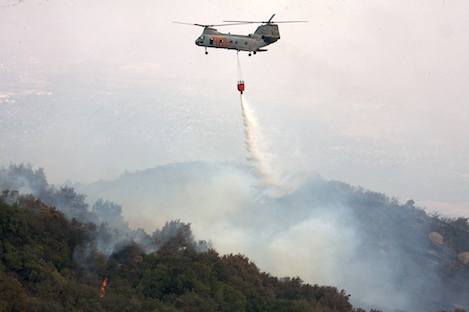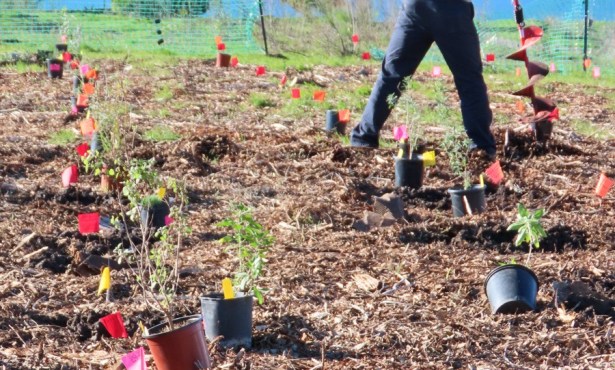Firefighting Lingo

Firefighters who battle blazes throughout America speak in a technical language entirely their own. In the past week, you may have heard some such phrases tossed around in media reports or by the firefighters themselves. Here’s a rundown of the latest firefighting lingo.
Backfire: Set by firefighters inside established fire containment lines to consume the fuel in a wildfire’s path. Similarly, “burn outs” are used to fine-tune containment areas.
Blow-up: A sudden increase in fire activity that temporarily prevents control, often accompanied with large columns of smoke.
Bump up: To move locations, whether it’s an individual working on a fire line or an entire crew moving to a different wildfire. “Bump back” means to return to your location.
Cold trailing: Part of “mopping up,” firefighters employ this technique when they use their hands to feel the ground warmth, and then dig out every live spot and trench every live edge.
Contain a fire: This happens when a full fuel break-including natural barriers, dozer and hand lines, and roadways-are surrounding a fire.
Control a fire: Following containment, this is when a fire is completely extinguished and the fire line is strengthened to prepare for flare-ups.
Crowning: When the fire moves through trees and high shrubs above the ground fire.
Defensible space: Zones where flammable materials have been cleared or treated to act as a barrier between wildfires and humanmade structures. These are at least 30 feet by definition, but the larger the flames, the bigger defensible space required.
Direct attack: Using all firefighting resources, from hand crews to air tankers, to put out the fire where it’s burning.
Drip torch: Hand-held tank with a spout that’s used for igniting backfires and burn-outs by dripping a flaming mix of diesel and gasoline.
Flanks: The burning regions that are parallel to a wildfire’s spread.
Flare-up: Sudden burst of wildfire, but unlike a blow-up, is short and doesn’t affect control plans.
Hand line: A fire line built with hand tools.
Hotshots: Highly trained firefighters who build hand lines. They usually work in a hand crew of 20 people.
Indian pump: Five-gallon backpack water carrier with hose and pump to be used on hot spots and during mop-ups.
Initial attack: The actions taken by the first resources to arrive at a wildfire to protect lives and property, and prevent further extension of the fire.
Ladder fuels: Materials that allow a fire to jump from ground to trees with ease. These are crucial for homeowners to eliminate.
McLeod: A combined rake and hoe used in building hand lines.
Mop-up: After a fire is controlled, this process reduces smoke, ensures that the burning has stopped, and removes potential dangers such as falling rocks.
Nomex: The brand of a fire-resistant material used in firefighter’s jumpsuits.
Pulaski: Also known as a “P-tool,” this combined ax and hoe is used for building hand lines.
Rate of spread: The amount of fire activity extending in a horizontal direction, usually expressed in chains (one chain=66 feet) or acres per hour.
Red flag warning: The term used by meteorologists to indicate a critical fire weather pattern.
Relative humidity: The ratio of current moisture in the air to the maximum possible amount of air moisture. Below 20 percent allows fires to spread easily; below 10 percent can lead to extreme fire behavior.
Retardant: The substance, typically dropped from air tankers, that reduces flammability in the brush. It does not put out a fire, but slows it down so firefighters can attack directly.
Slop-over: When a wildfire jumps an established containment line, usually occurring along roads, ridges, and/or lines cut by dozers or fire crews.
Snag: A dead tree that can be hazardous to firefighters.
Spot fire: Small blazes that start outside the main wildfire due to flying embers.
Spotting: When a fire is actively shooting out sparks that cause spot fires.



